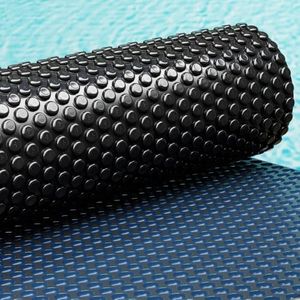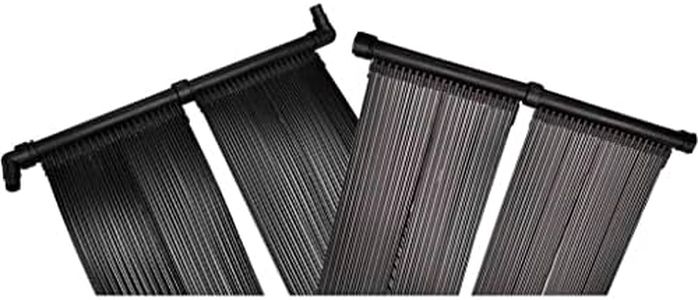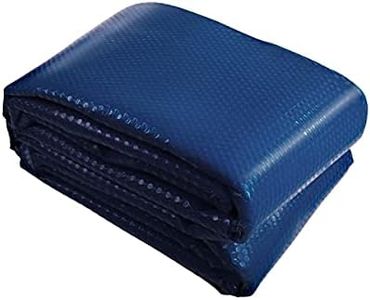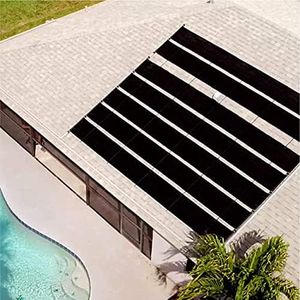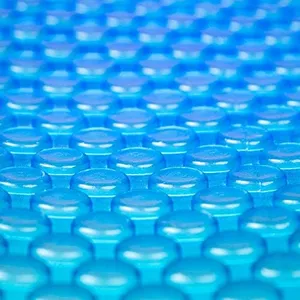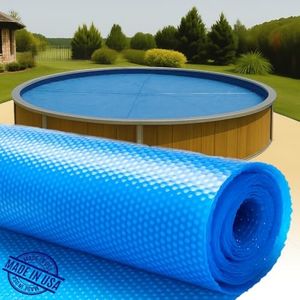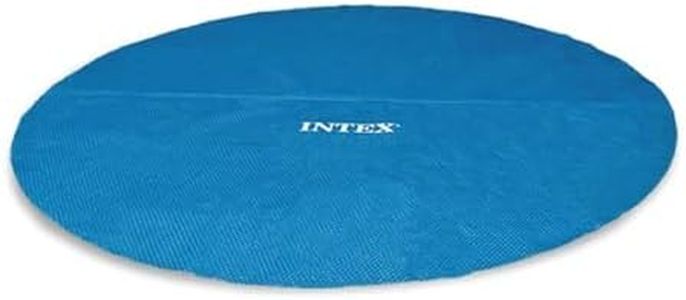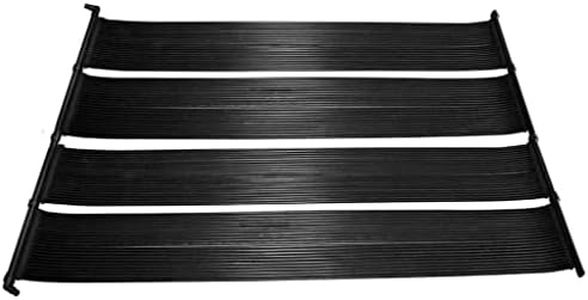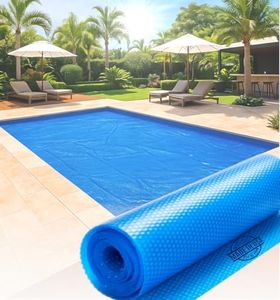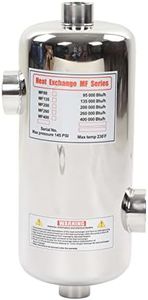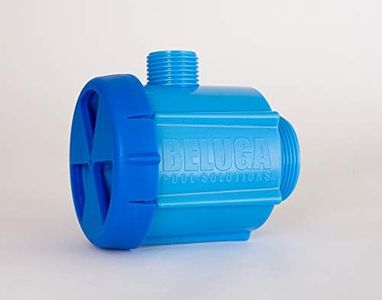We Use CookiesWe use cookies to enhance the security, performance,
functionality and for analytical and promotional activities. By continuing to browse this site you
are agreeing to our privacy policy
10 Best Solar Pool Heaters
From leading brands and best sellers available on the web.Buying Guide for the Best Solar Pool Heaters
Choosing a solar pool heater is an excellent way to keep your pool comfortable while using clean, renewable energy. To pick the right one, you should think about the climate you live in, your desired pool temperature, how often you swim, and the size of your pool. The right solar heater will efficiently use sunlight available in your area and fit seamlessly into your pool routine. You'll want to ensure it's compatible with your pool's plumbing and space, and that it provides enough heat for your swimming needs throughout the season.Collector SizeCollector size refers to the total surface area of the solar panels or mats that capture sunlight and transfer heat to your pool water. This specification is crucial because it directly affects how much heat can be generated. The larger the collector, the more sunlight it can absorb, meaning it can heat more water or raise the temperature more quickly. When considering collector size, smaller setups (around 50-70% of the pool's surface area) are fine for mild climates or partial use, while climates with cooler temperatures or year-round swimming will typically require larger collector sizes (up to 100% of the pool’s area or more). To determine the right size, think about your pool size and how warm you want your water to be, as well as how much direct sunlight your area receives.
Flow RateFlow rate is a measure of how much pool water the solar heater can move through its system per hour, usually listed in gallons per minute (GPM) or gallons per hour (GPH). This impacts how efficiently and quickly the entire volume of your pool can be heated. Lower flow rates mean slower heating and potential for uneven water temperatures, while higher flow rates support more rapid and uniform heating. Consider how frequently your pool is used and how quickly you prefer the water to reach your target temperature: light, occasional use may need less, but daily or frequent use benefits from a higher flow rate to maintain comfort.
Type of CollectorSolar pool heaters generally come in two main types: flat-plate collectors and evacuated tube collectors. Flat-plate collectors are more common, cost-effective, and suitable for moderate climates. They are panels that lie flat and are usually enough for most residential pools. Evacuated tube collectors are more efficient in cooler or less sunny climates because they retain heat better, but they are typically more expensive and complex. Select the type based on your climate and how long you plan to extend your swimming season: flat plates for sunny, mild areas or standard use, and evacuated tubes for cooler climates or extended seasons.
Installation MethodInstallation method describes how and where you can set up the solar heater, such as on a roof, ground next to the pool, or other structures. Some systems are lightweight and designed to be easily installed on the ground or leaned against a fence, while others might require sturdy roof mounting. Simpler installations generally offer flexibility and quick setup, but installing on a roof might collect more sun and free up yard space. Consider your available space and willingness to undertake a more permanent installation when deciding which method fits your situation best.
Durability and Material QualityDurability involves the quality of materials used for the collectors and piping, which can affect the system’s long-term performance and resistance to weathering, chlorine, or saltwater. Sturdier materials such as UV-resistant plastics or metals last longer and require less maintenance, especially if you live in areas with harsh weather or plan to use pool chemicals. For mild climates and seasonal use, basic materials may suffice, but if you’re looking for a long-lasting solution or have a saltwater pool, prioritize premium materials.
